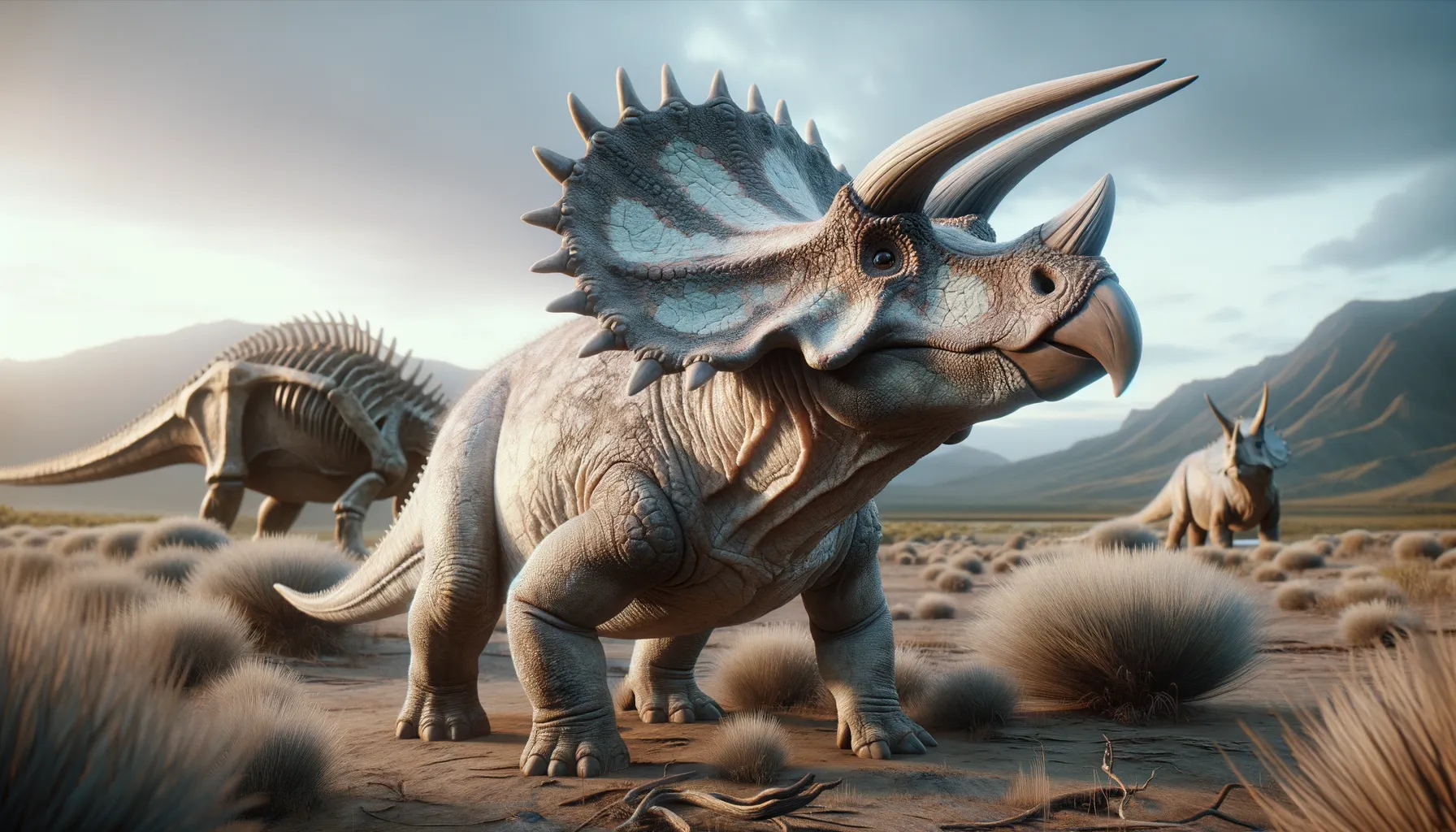
Prenoceratops
Small ceratopsian with big history!
Period
Cretaceous
Length
Roughly 2.5 meters long.
Height
Around 1.2 meters tall.
Weight
Approximately 750 kilograms.
Prenoceratops was a small ceratopsian dinosaur that roamed the earth during the late Cretaceous period. Known for its herbivorous diet, it was closely related to the famous Triceratops, although it lacked the prominent horns and neck frill. The fossils of Prenoceratops were first discovered in North America, providing insights into its unique anatomy and evolutionary significance. Despite its small size, this dinosaur played an important role in its ecosystem, contributing to the diversity of the Cretaceous period.
Diet
Prenoceratops was an herbivore, feeding primarily on ferns, cycads, and other low-lying vegetation. Its beak-like mouth helped it to efficiently clip plants and leaves for consumption.
Hunting
Being a herbivore, Prenoceratops did not hunt. It adapted its behavior to graze on various plants, using its keen senses to stay alert against predators.
Environmental challenges
Prenoceratops faced challenges from predators like theropods and environmental shifts, such as changes in vegetation and climate. The lush Cretaceous landscapes provided ample food but required these dinosaurs to be constantly vigilant. Changes in plant life could have influenced their diet and required adaptation in feeding strategies over time. Despite these challenges, Prenoceratops thrived, adapting to its surroundings and maintaining its presence in its habitats.
Speed
Slow, steady walker.
Lifespan
Lived around 20-30 years.
First discovery
Discovered in Montana, USA in 2004.
Fun Facts
- Prenoceratops was a small herbivorous dinosaur that lived about 75 million years ago during the Late Cretaceous period.
- Unlike its more famous relative Triceratops, Prenoceratops did not have large facial horns.
- Prenoceratops was part of the ceratopsian group, known for their beaked faces similar to modern-day birds.
- This dinosaur measured just about 1.5 to 2 meters long, making it quite small compared to some of its massive relatives.
- Prenoceratops fossils have mostly been found in what is now Montana, USA.
- Scientists believe Prenoceratops may have used its beak to nip at low-growing plants and ferns.
- Prenoceratops provides key insights into the evolution of ceratopsian dinosaurs, showing how features like frills developed over time.
Growth and Development
Prenoceratops likely developed from smaller juveniles into larger adults over several years. Its growth involved the development of a more robust body structure and stronger limbs to support its weight and locomotion. The young may have lived in protective family groups until they matured.
Habitat
The habitat of Prenoceratops included lush floodplains and forests that provided abundant vegetation to feast on. These environments offered cover from predators and ideal conditions for its herbivorous diet. The temperate climate of the late Cretaceous provided fluctuating seasons that Prenoceratops adapted to over time.
Interaction with other species
Prenoceratops likely interacted primarily with other herbivores as they shared similar habitats. It may have been less dominant compared to larger ceratopsians, avoiding conflicts in favor of harmony. Predatory dinosaurs posed a constant threat, necessitating alertness and possible group living for safety.
Natural lifespan
Prenoceratops had a natural lifespan of about 20 to 30 years.
Reproduction
Prenoceratops reproduced via egg-laying, similar to other dinosaurs. Nesting sites likely contained multiple eggs, and parental care might have been limited though crucial in early life stages. Offspring grew over several years, developing the skills necessary for survival in their habitat.
Social behaviour
Prenoceratops may have been social to some extent, living in small groups to enhance protection against predators. Social interactions could have involved communication through vocalizations or visual signals. Group living would have provided benefits in resource gathering and defense.
Fossil locations
Prenoceratops fossils have primarily been found in Montana, USA, providing key information about its existence. These discoveries were instrumental in understanding its anatomical features and ecological role. Fossil evidence from North America highlights the region's rich prehistoric biodiversity.
